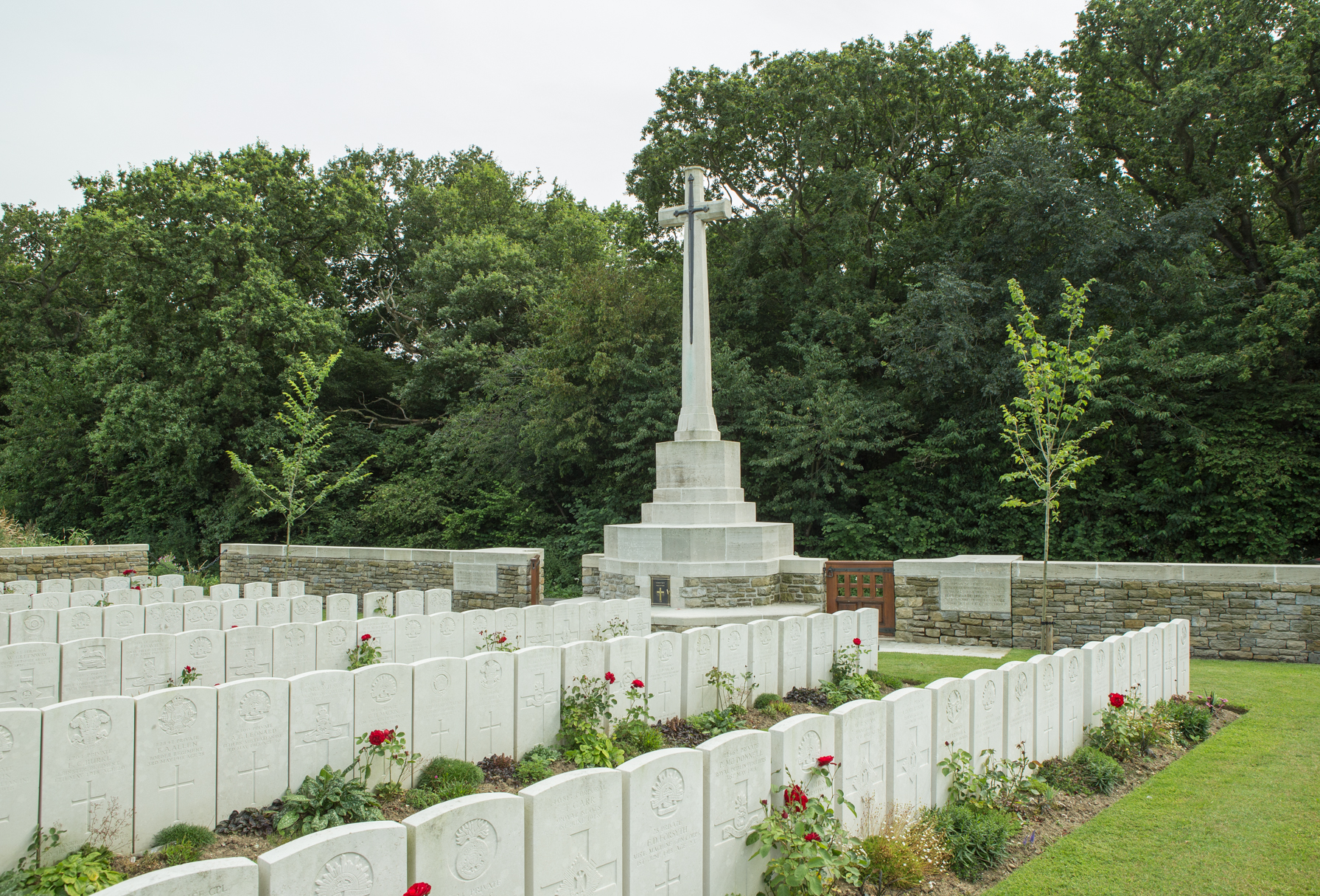Ernest Bramwell Bennett
Date of birth: 1894
Date of death: 14.4.1918
Area: Outwood
Regiment: King's Own Yorkshire Light Infantry
Family information: Son of John and Ann Bennett
Rank: Private
Service number: 12/92
War Service
When war was declared in August 1914, he was employed at Wrenthorpe Colliery. However, in answer to Lord Kitchener’s call for volunteers, Ernest Bramwell joined the newly formed 12th (Service) Battalion, Kings Own Yorkshire Light Infantry. This battalion was formed at Leeds, on 5th September, by the West Riding Coal Owners Association and was to be designated a pioneer battalion. As a pioneer battalion, their main role was to assist front line infantry by digging trenches, installing barbed wire entanglements and moving supplies and ammunition.
In December 1915, after some 14 months training, Private Bennett and the 12th KOYLI, attached to the 31st Division, sailed for Egypt, where they were to defend the Suez Canal. However, in March 1916, the 31st Division was transferred to France, landing at Marseilles before moving north towards the Somme.
On 1st July 1916, the opening day of the Battle of the Somme, the 31st Division was on the extreme left of the British attack and charged with capturing the village of Serre. The 31st Division attack failed, with the enemy artillery and machine gun fire inflicting many casualties. For the next four months, the 12th KOYLI worked under the direction of the Royal Engineers. This work included unloading coal barges, digging drainage systems in the forward area, making tramways, tunnelling and building strong points.
Early in 1917 the battalion was engaged in construction work on the Fond du Vase railway, near the Hindenburg Line. During the Arras offensive, which began on 9th April 1917, the 12th KOYLI was deployed to dig communication trenches near Vimy Ridge.
On the 21st March 1918, the German Army launched a major offensive, towards Amiens. The 31st Division, along with all the divisions on this front, was forced to make a series of fighting withdrawals before the larger enemy force. The 12th KOYLI continued with their trench construction work, throughout this series of withdrawals.
However, on 1st April 1918, the 12th KOYLI was withdrawn and, after some training in infantry and musketry work, moved northwards to the Bailleul sector. On the 11th April, the battalion was covering the crossroads at Couronne, during a German attack from the south-east. The following day saw the battalion positions shelled and come under machine -gun fire. On the 13th April, the machine-gun fire became intense and a series of attacks developed, forcing the 12th KOYLI to fall back to new positions. The fighting was continuous and eventually the battalion gave ground and withdrew to the Rue du Bois. The 12th KOYLI remained in these positions until withdrawn on the morning of 14th April, having incurred 275 casualties.
One of these casualties was Private Ernest Bramwell Bennett, who was wounded and taken to a Casualty Clearing Station at Ebblinghem, a village between St Omer and Hazebrouck. However, he succumbed to his wounds and died on 14th April 1918. He was buried in Ebblinghem Military Cemetery, which contains 441 Commonwealth graves from the First World War
His name is also remembered on the Wrenthorpe Colliery Memorial at St John’s Church, Bradford Road, Wakefield.
Family Life
Ernest Bramwell Bennett was born in 1894, the son of John Bennett and his wife Ann, formerly Lunn, of Outwood. His father, who was born in Derbyshire, was a coal miner and also a local Methodist preacher. Ernest Bramwell was the eighth, of nine children, born to John and Ann Bennett, who was blind. The family grew up in the Outwood area, living at Mount Pleasant, Orchard Place and Canal Lane, before moving to “Fairmont” on Leeds Road, where they were living at the time of the 1911 census. Later his parents moved to Buxton Crescent at Newton Hill. On leaving school Ernest Bramwell Bennett found work at a local colliery, where he was initially employed underground as a trammer.
 Ebblinghem Military Cemetery
Ebblinghem Military Cemetery

